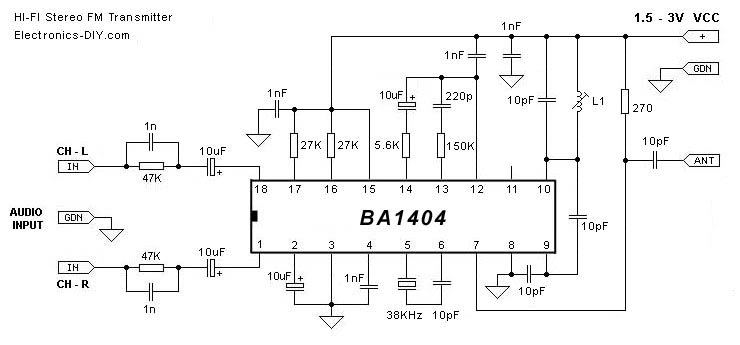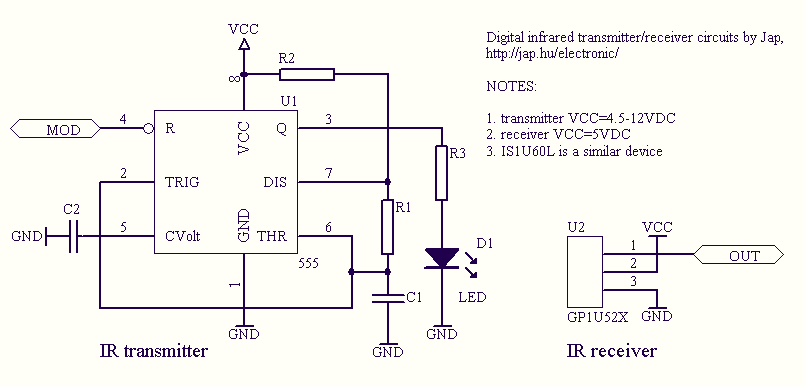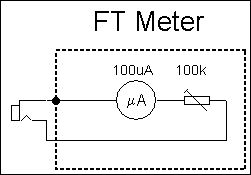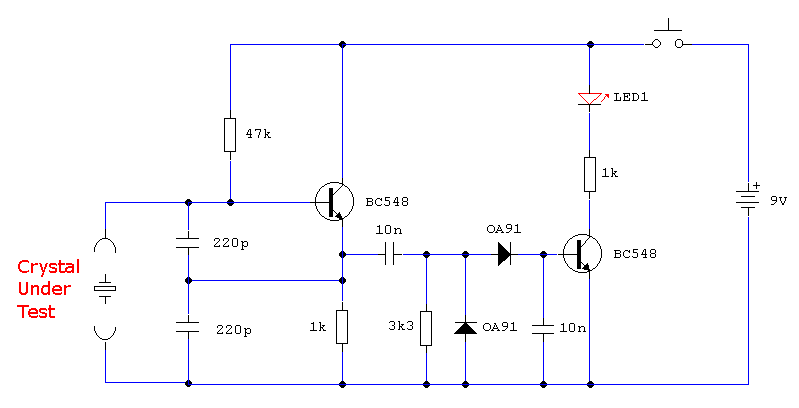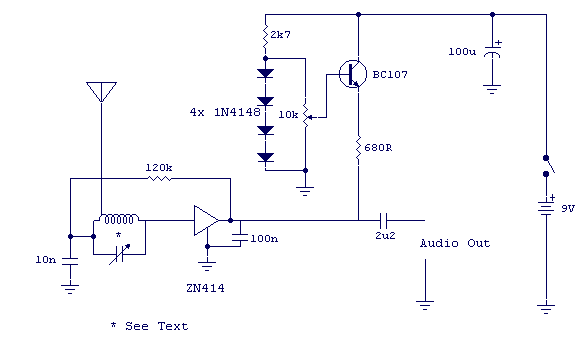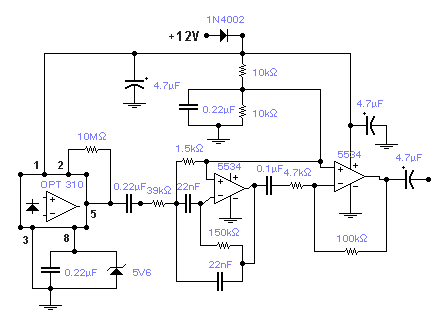
receiver circuits
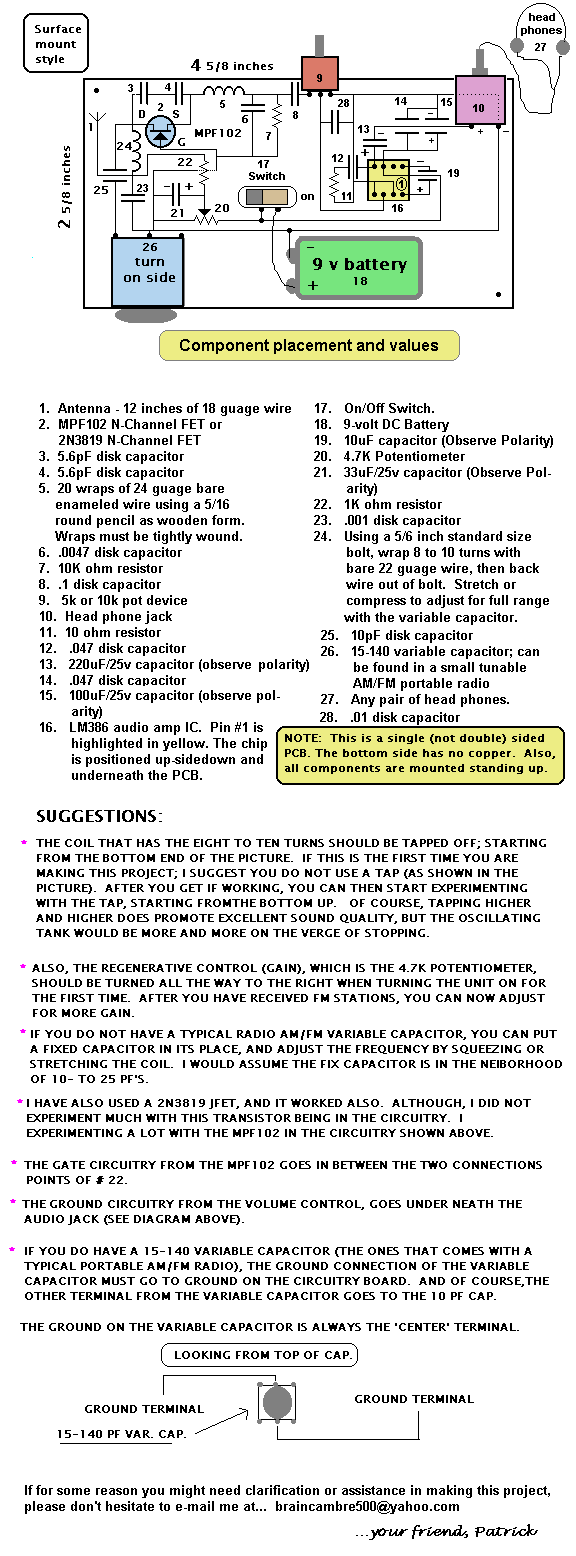
A simple CATV upstream fiber optic receiver utilizes DC pilot automatic gain control (AGC). Upstream fiber links in a community antenna television (CATV) system are often challenging to align correctly. Set-top boxes and cable modems use "long-loop" AGC. Additionally, a simple circuit detects current pulses, providing a visible indication of both positive and negative current pulses. The pulse amplitudes can vary from 20 to 150 mA, with pulse durations ranging from 10 to 40 milliseconds, and their repetition rate can span from 40 to 180 pulses per minute.
The CATV upstream fiber optic receiver is a critical component in modern communication systems, particularly in community antenna television networks. This device is designed to convert optical signals from fiber optic cables into electrical signals that can be processed by downstream equipment, such as set-top boxes and cable modems. The use of DC pilot AGC is essential for maintaining signal integrity and ensuring consistent output levels despite fluctuations in input signal strength. This automatic gain control method allows the receiver to adjust its gain dynamically, accommodating variations in the optical signal caused by distance, environmental factors, or network configuration changes.
In conjunction with the fiber optic receiver, the current pulse detection circuit serves a vital role in monitoring the performance of the system. This circuit is capable of detecting current pulses that vary in amplitude from 20 mA to 150 mA, which may represent data transmissions or control signals within the network. The pulse durations, which can range from 10 ms to 40 ms, indicate the timing of these signals, while the repetition rate of 40 to 180 pulses per minute provides insight into the signal frequency and overall system activity. The visible indication feature of the pulse detector enhances usability, allowing technicians to monitor system performance visually and troubleshoot issues effectively.
Overall, the integration of a DC pilot AGC in the CATV upstream fiber optic receiver, along with a current pulse detection circuit, enhances the reliability and efficiency of CATV systems, ensuring high-quality signal transmission and reception in complex network environments.Simple CATV Upstream Fiber Optic Receiver Uses DC Pilot AGC. Upstream fiber links in a community antenna television (CATV) system are usually among the most difficult elements of the network to align properly. Set-top boxes and cable modems employ "long-loop" automatic gain control (AGC) (in other w ords, . Simple Circuit Detects Current Pulses : 01/06/94 EDN-Design Ideas / The pulse detector provides a visible indication of positive and negative current pulses. The pulses amplitudes can vary from20 to150 mA. The pulses durations can range from10 to40 msec, and their repetition rate can span40 to180 pulses/minute.
🔗 External reference
The CATV upstream fiber optic receiver is a critical component in modern communication systems, particularly in community antenna television networks. This device is designed to convert optical signals from fiber optic cables into electrical signals that can be processed by downstream equipment, such as set-top boxes and cable modems. The use of DC pilot AGC is essential for maintaining signal integrity and ensuring consistent output levels despite fluctuations in input signal strength. This automatic gain control method allows the receiver to adjust its gain dynamically, accommodating variations in the optical signal caused by distance, environmental factors, or network configuration changes.
In conjunction with the fiber optic receiver, the current pulse detection circuit serves a vital role in monitoring the performance of the system. This circuit is capable of detecting current pulses that vary in amplitude from 20 mA to 150 mA, which may represent data transmissions or control signals within the network. The pulse durations, which can range from 10 ms to 40 ms, indicate the timing of these signals, while the repetition rate of 40 to 180 pulses per minute provides insight into the signal frequency and overall system activity. The visible indication feature of the pulse detector enhances usability, allowing technicians to monitor system performance visually and troubleshoot issues effectively.
Overall, the integration of a DC pilot AGC in the CATV upstream fiber optic receiver, along with a current pulse detection circuit, enhances the reliability and efficiency of CATV systems, ensuring high-quality signal transmission and reception in complex network environments.Simple CATV Upstream Fiber Optic Receiver Uses DC Pilot AGC. Upstream fiber links in a community antenna television (CATV) system are usually among the most difficult elements of the network to align properly. Set-top boxes and cable modems employ "long-loop" automatic gain control (AGC) (in other w ords, . Simple Circuit Detects Current Pulses : 01/06/94 EDN-Design Ideas / The pulse detector provides a visible indication of positive and negative current pulses. The pulses amplitudes can vary from20 to150 mA. The pulses durations can range from10 to40 msec, and their repetition rate can span40 to180 pulses/minute.
🔗 External reference
